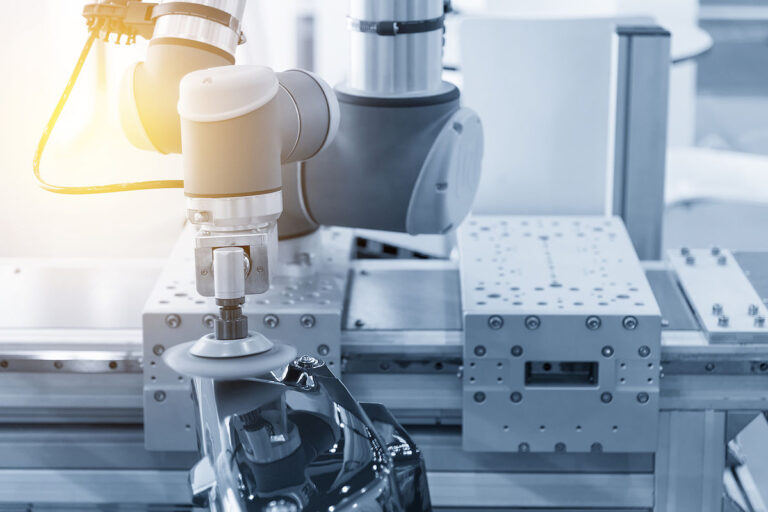In a lot of companies, manual operators do sanding and polishing tasks because the owners don’t get the reasoning behind mechanizing these tasks. Operators have to wear PPE (personal protective equipment) due to chemical exposure all day.
On the other hand, robots don’t suffer the same fate, and they can withstand exposure to chemicals without needing PPEs. In addition, sanding and polishing tasks are strenuous and repetitive, which makes them ideal for automation.
These tasks are also pretty straightforward, which means that automating them is easy. With the right equipment, robot polishing and sanding can be achieved. But even with the correct equipment for polishing tasks, some factors can affect the quality of the work done.
So how can you ensure that your automated polishing or sanding task will be a success? Let’s look at some of the fundamental factors that you can look into so that the result of your sanding and polishing tasks is outstanding.
The Fundamental Factors to Consider During Robotic Polishing Include:
Finishing Type
Are you executing a polishing, sanding, or buffing task? Robots can do all these tasks. They are basically varieties of the same process whereby polishing grit is used to eject surface flaws from a workpiece but with some minor differences.
So What Do These Three Tasks Represent?
Polishing
During a polishing task, small grit sizes are used to generate a flat and flawless surface which can be seen when the workpiece is observed under a microscope.
Sanding
Sanding is a reductive procedure whose objective is to remove large amounts of material so that a workpiece doesn’t retain any defect.
Buffing
During buffing, a soft material such as a microfiber cloth is used alongside an abrasive compound to eliminate defects on a workpiece.
Workpiece Material
A variety of materials are compatible with robotic polishing, for instance, metal, wood, plastic, fiberglass, carbon fiber, marble, etc. However, each material responds differently to polishing and sanding. As a result, some materials will need distinct polishing media, while others will require a different polishing or sanding strategy.
Polishing Media
The choice of polishing media, for instance, sandpaper, perhaps has the most significant effect on the kind of quality you will achieve after a sanding or polishing task.
Polishing Speed
Two speeds can impact the overall quality of a polished workpiece:
- The speed of the polishing tool; basically how fast the orbital polishing tool spins.
- The speed of the robot across the surface of a workpiece.
Both these speeds should be kept at a constant across the entire surface of the workpiece. It has been verified that robots can maintain a consistent speed compared to manual operators whose speed fluctuates for various reasons.
Polishing Strategy
Polishing tasks depend on a clear and consistent strategy. What pattern will you utilize to move the polishing media across the workpiece? For instance, circular motion, row by row, etc.
Which grit sizes will you utilize for each successive pass of the polishing tool? Each successive grit should steadily eject smaller and smaller amounts of material. Therefore, the ideal strategy is, to begin with, the roughest grit and work your way down to the finer ones with each pass.
Polishing Force
During a polishing task, the robot needs to apply a certain amount of force onto the workpiece to keep the polishing media in contact with the surface. This can be achieved using a force sensor which can be encoded using force control.
The objective here is not to push too hard on the surface of the workpiece. A common tip for polishing is to use the weight of the polishing robot to provide downward force only. The machine just needs to provide a constant force as it moves across the workpiece.
Material Removal Rate
The above factors (material, media, speed, force, and strategy) combine to give the MRR (material removal rate). As the name suggests, MRR refers to how fast material can be ejected by the polishing media from the surface of the workpiece.
How Do the Above Factors Affect MRR?
Material
Softer materials will be ejected faster than harder materials.
Media
Rougher grits which generally have a lower rating, will eject material faster than finer grits. However, coarser grits will leave noticeable lines on the surface of the workpiece.
Speed
When the polishing tool turns faster, it ejects material more quickly. However, when the robot moves faster, the MRR will be lower on any specific surface of the workpiece.
Strategy
Unsuccessful patterns may cause some parts of the workpiece to receive more attention than others, which boosts the MRR.
Force
The more force that’s applied, the faster material is ejected. However, massive forces can cause uneven polishing, which will wear down the polishing media faster.
Wear rate
Wear rate refers to how fast the polishing media is depleted. In other words, how often you need to swap it. Wear rate doesn’t necessarily impact the quality of the polishing task, but it can impact the overall efficiency of the entire task.
If you need to change the polishing pad after 30 minutes, it doesn’t make sense to use a robot for the task compared to when you need to change the pad after every 3 hours. Wear rate is affected mainly by the workpiece material and the polishing media chosen. So if you’re experiencing a high wear rate, try changing the polishing media.
Connection to Machine
For robotic polishing to be feasible for your business, it should be relatively easy to add the competence of a machine. You shouldn’t have to spend a lot of time and cash to attach the polishing tool to the robot. Before committing to robotic polishing or sanding, ensure there is an easy way to integrate the polishing media with the machine.
Ease of Programming
Back then, perhaps the most significant barrier to robotic polishing was programming complexity. Since robots need force control, it was a challenge to implement polishing strategies in robotic controllers. Programming the machines used to last hours, if not days.
Final Thought
All in all, robotic polishing is a great way to enhance the quality, consistency, and safety of finished products. Large and small companies can utilize robots to improve their polishing tasks, but several factors must be considered, as illustrated above.



